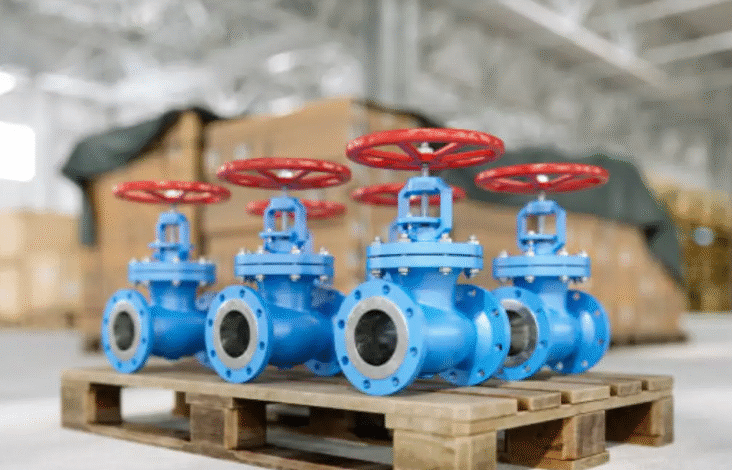Essential Design Factors for High-Pressure Valve Engineering

High-pressure valves are essential in industrial systems, managing fluid flow under extreme pressures exceeding 1,000 PSI. Their design involves careful considerations like material selection, sealing mechanisms, and compliance with standards to ensure reliable performance. This guide highlights the key factors that distinguish high-pressure valves, helping professionals make informed decisions for safe and efficient operations.
Material Selection: The Foundation of High-Pressure Performance
The choice of materials forms the backbone of any high-pressure valve design. Operating under extreme pressures subjects valve components to significant mechanical stress, making material selection a critical engineering decision.
Stainless Steel: The Industry Standard
Stainless steel grades, particularly 316 and 316L, have become the go-to choice for high-pressure applications. These austenitic stainless steels offer excellent corrosion resistance while maintaining structural integrity under pressure. The low carbon content in 316L reduces the risk of carbide precipitation, making it ideal for applications involving aggressive chemicals or elevated temperatures.
For even more demanding applications, duplex stainless steels like 2205 provide superior strength-to-weight ratios and enhanced chloride stress corrosion resistance. These materials can handle pressures that would compromise standard austenitic grades.
High-Performance Alloys
When stainless steel reaches its limits, specialized alloys step in. Inconel 625 and Hastelloy C-276 excel in extreme chemical environments where both pressure and corrosion present challenges. These nickel-based superalloys maintain their mechanical properties at elevated temperatures, making them suitable for high-pressure steam and chemical processing applications.
Chrome-moly steels (4130, 4140) offer another alternative, providing excellent strength characteristics at a more economical price point than exotic alloys. However, their use requires careful consideration of the operating environment due to their susceptibility to certain forms of corrosion.
Design Types: Matching Configuration to Application
Different valve designs offer distinct advantages for high-pressure service, with each type excelling in specific operating conditions.
Globe Valves: Precision Under Pressure
Globe valves excel in applications requiring precise flow control under high pressure. Their design inherently provides excellent shutoff capabilities, with the disc moving perpendicular to the flow path. This configuration allows for gradual flow restriction, making globe valves ideal for throttling applications.
The seat design in high-pressure globe valves often incorporates metal-to-metal sealing surfaces or specialized soft seats that can withstand extreme pressures. The body construction typically features forged construction rather than cast, providing superior grain structure and pressure resistance.
Ball Valves: Quarter-Turn Reliability
Ball valves offer rapid actuation and excellent flow characteristics when fully open. For high-pressure applications, the ball and seats require special attention. Trunnion-mounted designs provide superior support for the ball under high-pressure conditions, preventing deformation that could compromise sealing.
Floating ball designs work well in smaller sizes and moderate high-pressure applications, but trunnion-mounted configurations become essential as pressure and valve size increase. The seat materials must balance sealing effectiveness with the ability to withstand high contact stresses.
Check Valves: Preventing Reverse Flow
Check valves in high-pressure systems must operate reliably without external power while withstanding full system pressure in the reverse direction. Swing check valves offer low pressure drop but require careful sizing to ensure proper closure. Spring-loaded check valves provide more positive closure but at the cost of increased pressure drop.
Dual-plate check valves have gained popularity in high-pressure applications due to their compact design and reduced weight compared to swing checks of equivalent size.
See also: Understanding The Importance Of Life Insurance In Financial Planning
Sealing Mechanisms: Ensuring Leak-Tight Performance
Effective sealing under high pressure requires sophisticated approaches that go beyond standard valve designs.
Metal-to-Metal Sealing
Metal-to-Metal seals provide the ultimate in high-pressure, high-temperature performance. These designs rely on precisely machined surfaces that deform slightly under pressure to create a seal. While they may not achieve the zero-leakage rates of soft-seated valves under normal conditions, they excel in extreme environments where soft seals would fail.
Stellite facing and other hard-facing materials enhance the durability of metal seats, allowing them to maintain sealing effectiveness through thousands of cycles.
Elastomeric Seals
High-performance elastomers like Viton, EPDM, and specialized polyurethanes can provide excellent sealing in high-pressure applications within their temperature limits. These materials must be carefully selected based on chemical compatibility and pressure-temperature relationships.
O-ring groove design becomes critical in high-pressure applications. Proper groove dimensions, backup rings, and surface finishes all contribute to seal longevity and performance.
Advanced Sealing Technologies
Pressure-energized seals use system pressure to enhance sealing force, making them ideal for high-pressure applications. These seals improve their sealing effectiveness as pressure increases, providing a self-reinforcing sealing mechanism.
Spring-loaded seals combine the benefits of mechanical preload with pressure energization, maintaining sealing force across a wide range of operating pressures.
Standards Compliance: Meeting Industry Requirements
Adherence to recognized industry standards ensures high-pressure valves meet minimum performance and safety requirements while providing consistency across manufacturers.
ASME Standards
ASME B16.34 covers pressure-temperature ratings for valves and provides the foundation for high-pressure valve design. This standard establishes the relationship between material properties, wall thickness, and pressure ratings, ensuring adequate safety margins.
ASME B16.5 and B16.47 govern flange dimensions and ratings, ensuring proper interface compatibility in high-pressure systems. These standards become particularly important as pressure ratings increase, with Class 1500 and higher flanges requiring precise dimensional control.
ISO Standards
ISO 15761 provides global standards for steel gate, globe, and check valves, offering an alternative to ASME standards in international markets. ISO standards often provide more detailed guidance on testing and quality requirements.
ISO 5208 establishes pressure testing requirements that ensure valve integrity before installation. High-pressure valves typically undergo both shell tests and seat tests at pressures exceeding their rated working pressure.
Maintenance: Preserving High-Pressure Performance
Proper maintenance practices are essential for ensuring high-pressure valves continue to perform reliably throughout their service life.
Inspection Protocols
Regular visual inspection should focus on external leakage, actuator operation, and signs of corrosion or mechanical damage. High-pressure systems amplify the consequences of minor issues, making early detection critical.
Pressure testing at regular intervals verifies ongoing seal integrity. These tests should follow manufacturer guidelines and relevant industry standards, with test pressures based on valve ratings and service conditions.
Preventive Maintenance
Lubrication schedules must account for the higher stresses present in high-pressure applications. Valve stems and actuator components require lubricants that can withstand system pressures while maintaining their properties over time.
Seat and seal replacement should follow predictive rather than reactive approaches. Industrial valve manufacturers typically provide guidance on expected service life based on operating conditions, allowing for proactive replacement before failure occurs.
Troubleshooting Common Issues
Excessive seat leakage often results from debris contamination or seat damage. High-pressure systems require particular attention to upstream filtration to prevent particle contamination that could damage sealing surfaces.
Actuator problems in high-pressure applications frequently relate to insufficient actuator sizing. The higher forces required to operate high-pressure valves must be accounted for during initial design and verified during maintenance activities.
Conclusion
Designing high-pressure valves demands careful attention to materials, design, sealing, and maintenance, as extreme conditions leave no room for error. Investing in proper design enhances reliability, reduces costs, and improves safety. Partnering with experienced specialists can ensure your systems perform reliably under demanding conditions.




